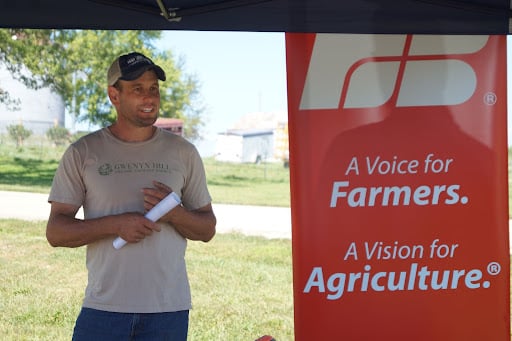
August 31, 2021
When asked what is the greatest skill I have for being a farmer, I thought about my experience grazing cows, growing organic crops, and knowledge gained during my dairy grazing apprenticeship. These are important and necessary skills for being a good farmer.
However, I feel the greatest is my knowledge of ecology and the way in which natural communities function. Regardless of the kind of farm, (organic, conventional, crops, or livestock), all are governed by the rules of nature. Understanding these rules and designing a farm to work with them will produce the best results for the land and the farmer.
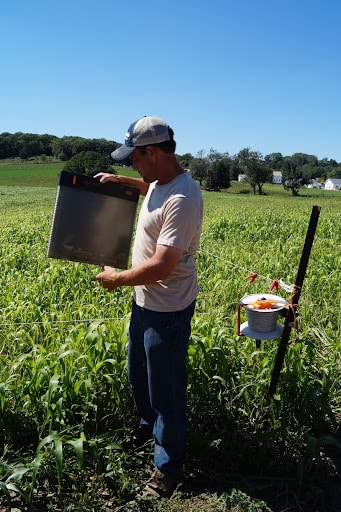
The natural community that I have studied and worked with the most is native prairie (the state of most farm soil prior to European settlers arriving in the Midwest.) True native prairies are made up of hundreds of plant species, which support thousands of soil, insect, and wildlife species. Prairie communities over thousands of years have built the most fertile and healthy soils on earth. After observing this system, it is clear that a few rules apply:
- Grow hundreds of species of plants on every acre, some actively growing as soon as the snow melts in the spring, more through the hot summer, and others into the cool fall and winter.
- Bare soil is almost non-existent and is quickly covered in the rare event that it occurs.
- Nutrients are constantly cycling through plants and animals, each species relying on one another.
- Each plant is adapted to a specific soil environment (such as dry hilltops, mesic uplands, or low wetlands).
On Gwenyn Hill Farm I am working to apply these concepts to how we farm in an effort to create a farm that works with nature rather than against it, while providing good food for people, and demonstrating a model of true sustainability.
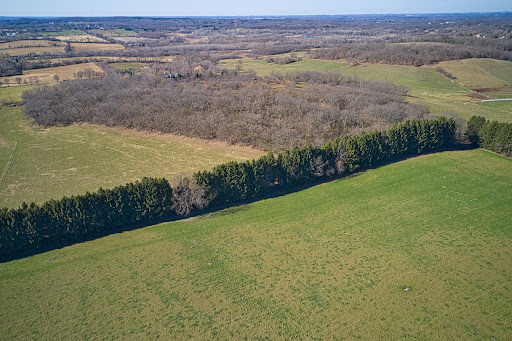
Grazing livestock is key to a sustainable farm. On this farm all of our livestock are rotationally grazed on pasture. Our pastures have many different species of both cool and warm season grasses, legumes, and forbs. Bare soil is almost non-existent in the pastures, and the livestock allow nutrients to be cycled back to the soil through their manure and urine. Native grassland birds, pollinators, insects, and wildlife benefit from and are supported by our grazing livestock.
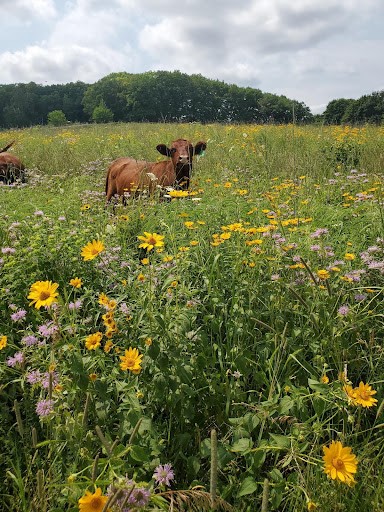
I noticed an example of this while moving the dairy cows back to pasture after morning milking. I saw a very large flock of birds following the cows, catching the flies that pester the cows. I noticed another example this spring: there was a group of wild turkeys which seemed to be following the rotation of the beef cows, but on areas of the pasture that the beef cows had grazed a few days back. The turkeys were picking through the cow pies and eating insects and fly larvae.
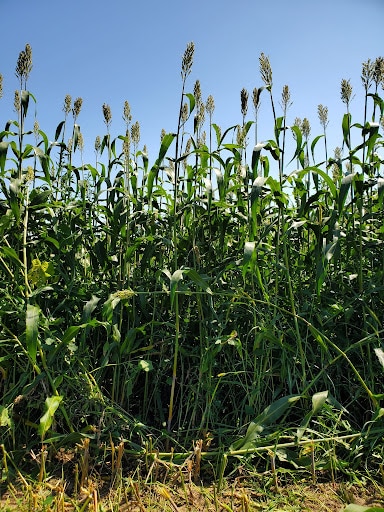
It is more difficult to follow those four rules with annual grain or forage crops. Most grain is grown in monocultures and creating bare soil through tillage is often necessary. Farms without livestock can feel it necessary to plant annual grain on land too steep and prone to erosion, or too low and wet, and feel the need to drain this land to make growing grain possible. In both cases, this degrades soil and water quality. On Gwenyn Hill Farm I try to carefully choose the land on which I grow grain. Not all land can or should grow grain. On steep or lowland, I choose perennial hay fields or pasture. On lands able to grow grain, I use crop rotations including hay, forage crops, grain, and cover crops.
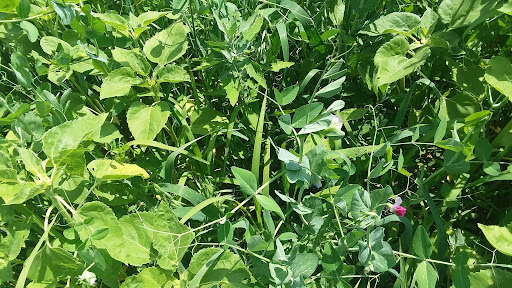
I avoid monocultures when possible. One example of this is our chicken feed grain. I use a mixture of wheat, barley, triticale, oats, and peas all grown together in the same field. This polyculture of grain also has a fibrous root system that holds the soil and filters water better than the more common feed grain of corn. Another example is growing winter rye and wheat with clover underseeded in the spring. The rye grows living roots in the soil through the winter, preventing erosion. The underseeded clover produces nitrogen for the crop, and provides more diversity than winter grain alone. It has also proven to be beneficial to the crop grown in the following year. I can visibly see this in one of our sorghum/sudan fields where a line of healthy darker green plants show in the area where the clover cover crop was.
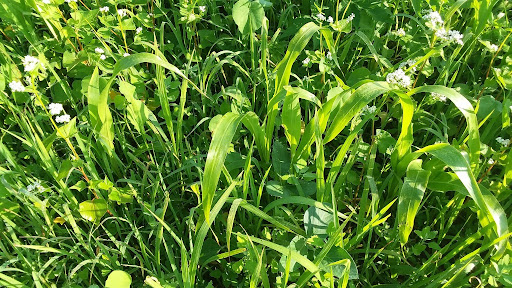
Cover crops also play an important part in our grain fields. Diverse mixtures of cover crops are planted after the main grain crop, and for the first time this year I will be integrating cattle into this system. The cattle will graze on the cover crops, which will provide valuable feed in the fall while helping to cycle nutrients into the soil. It also helps reduce the amount of mechanically harvested feed needed for the winter.
The practices I describe are not new in agriculture, but the buzz words “Regenerative Agriculture” have managed to popularize them and get even the non-farming community talking about them. That’s not a bad thing if combined with an understanding of what regenerative agriculture is. I hope to show some on-farm examples to foster an understanding of regenerative ag on Gwenyn Hill Farm.
Ryan Heinen is Gwenyn Hill’s Land & Livestock Manager. On August 30, 2021 Gwenyn Hill Farm hosted a Leaders of the Land Sustainability Field Day sponsored by the Farm Bureau. These were his opening remarks.
